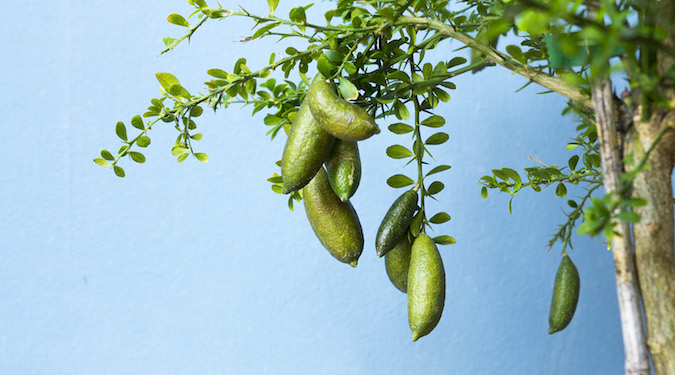Cultural awareness and reflection through food
Share

Adam Joseph explores Aboriginal food tourism, and how it exemplifies the opportunities for Indigenous Australians in the tourism industry to provide authentic, rewarding experience for tourists, while fostering cultural awareness and upholding traditional values.
In 2012 a war of words erupted in the Federal Parliament between two MPs on the same side of politics when one was described as an “urban Aboriginal” and “not a man of culture”.
As the senior policy adviser to that same political party in the tourism and regional development portfolio, I was fixated by this, but keen not to engage for several reasons. First, it was being driven by the other side of politics, for partisan political gain, and not to advance the cause of Indigenous Australians.
Second, I had only recently received the results of Tourism Australia research that showed 81% of inbound tourists wanted an ‘authentic’ Aboriginal tourism experience – something that required interpretation and understanding.
Third, it challenged my own thinking about Aboriginality, and potentially identity. When my grandparents holidayed in Queensland in the late 1950s, a decade before the Referendum on Aboriginal Citizenship, my grandmother had to buy beer in pubs and take them out to the kombi for my grandfather to drink. While his father’s identity was a closely guarded family secret that tormented him, he maintained that he was not Aboriginal, but merely tanned well in summer and “wasn’t going to drop his pants to prove it to a publican”.
Hearing that growing up left my siblings and I identifying not as Aboriginal people, but with them. We lived on a farm in scattered with Aboriginal artefacts, and spent our Christmas holidays in Condobolin (Wiradjuri country) where my great-aunt ran Well Baby clinics for Aboriginal families. We were proud of Dad’s role at Indigenous Business Australia helping to incubate Aboriginal-owned enterprises.
This background motivated me, quite naturally, to give pro bono assistance in recent years to a range of Aboriginal causes – from preventative health charities, to packaged food manufacturers, to tourism ventures. And yet, even for me, someone who is genuinely well-motivated to help to foster and celebrate Aboriginal culture, the process of doing so leaves me more often than not feeling awkward, unsure and at times intrusive.
Last week, I stood on a rock in what was once ‘Farm Cove’ looking out at Bennelong Point and the Sydney Opera House (once the site of a large shell midden). I was surrounded by well-known foodies (including restaurateur Peter Gilmore, and Young Henrys’ brewer Richard Adamson). In my group were representatives of packaged food manufacturers, including Coca-Cola Amatil and others, who had gathered for an Aboriginal cultural tour of the Royal Botanic Garden in Sydney.
As my mouth grew numb from a medicinal plant Gadigal people used to help aid tooth removal (Yuin woman, humourist and guide Jess Sinnott calls it a ‘dentist tree’), I listened to Jody Orcher (Ualarai Barkandji woman from Brewarrina) recreate the scene as, over two centuries before, Cadigal Cammeraigal Guringai people were yelling ‘Warra Warra Budu Nawi’ (warning each other about ghosts coming on a big canoe).
The bush tucker and cultural tour of the Royal Botanic Garden in Sydney reintroduces Australians to this wonderful tourist attraction by reinterpreting it as a place where food gathering, preparation and sharing has occurred for millennia. And for someone like me, who prides himself on being culturally informed, it shines a light on how much more I have to learn. In fact, my journey has barely begun.
The importance of acknowledging Aboriginal development of food is explored with a powerful example. Guides introduce tourists to a certain fruit, which if eaten raw has a dangerous psychoactive effect. If eaten in large quantity, it causes certain death. The fact it can be eaten safely, however, if soaked in water for no less than two weeks is knowledge that was gained through trial and error and persistent research.
That knowledge represents the innumerable deaths of Aboriginal people who suffered in the process. I had heard often enough that cultural protocols were important, but learned, for the very first time, why this is so. For instance, I learned why fish is divided a certain way (different body parts shared among different groups: the elderly, children, men and women). But it’s not for me to share this insight into Aboriginal people’s culture in this article – it’s for Aboriginal guides to share this information as part of cultural information sharing business.
In using Aboriginal food, the importance of acknowledgement and involvement of Aboriginal people is key. The Botanic Garden’s cultural tour has also caused me to reflect on my own efforts, helping a Lithgow region farmer commercialise a paddock, based on the principles of acknowledgement, proper use and support for community. Her intention is to build a viable model, involving Aboriginal people, to deliver guided walks and catered meals. It could represent a model for other likeminded Australian farmers to diversify their agribusiness holdings. It’s obvious that work (and business ownership) opportunities for Aboriginal people that centre on celebrating their own rich culture bring more than financial security.
Aboriginal food tourism reinforces clan kinship, promotes health and well-being (via exercise and a balanced diet), fosters cross-cultural awareness, and helps safeguard the collective knowledge acquired by first peoples. It’s intractably hard going, building an experience that offers tourists a rewarding, interesting and varied experience, and one that may be considered ‘authentic’, let alone navigating local Aboriginal politics and overcoming mistrust about motives. Yet, the experience of the Royal Botanic Garden in Sydney demonstrates it is achievable.















